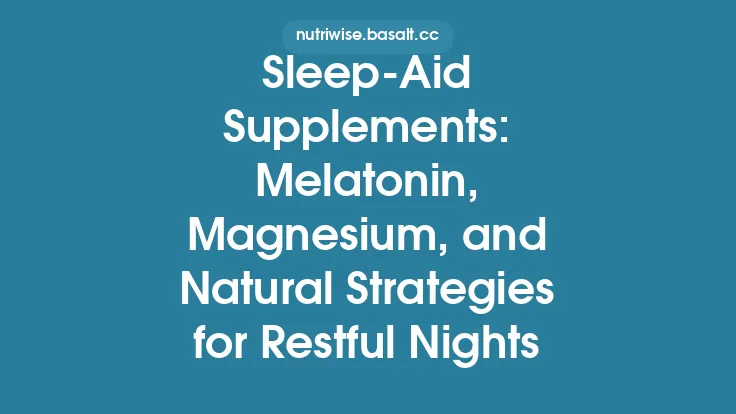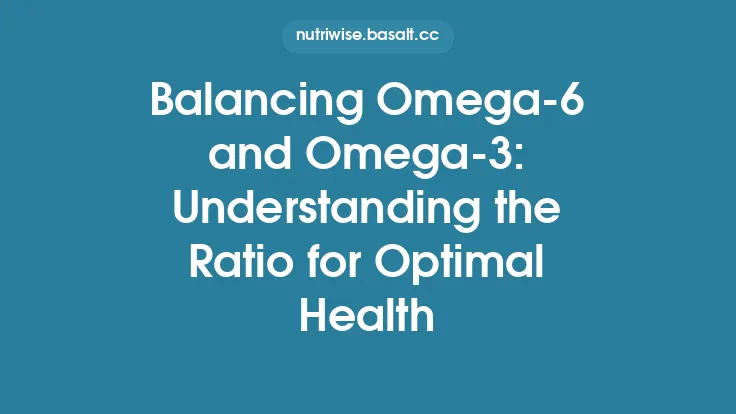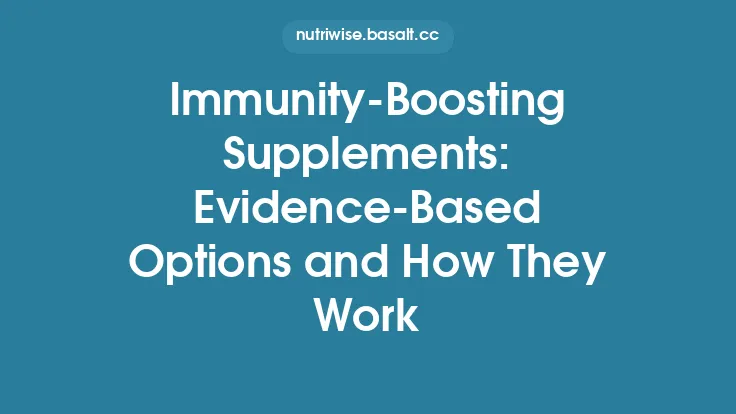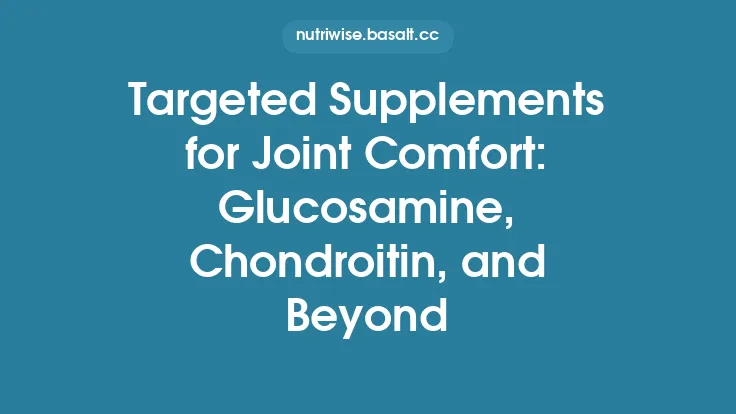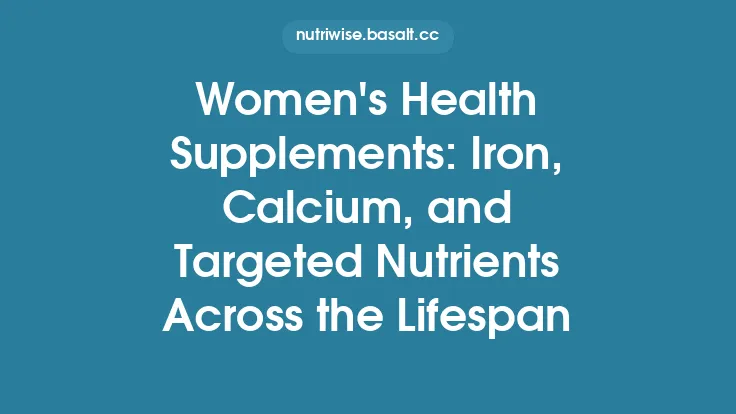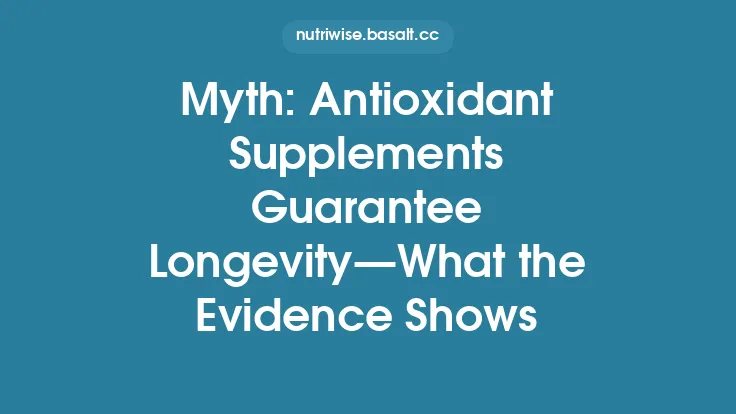The pursuit of emotional balance is a timeless human goal, and modern nutrition science has turned its attention to specific nutrients that may influence mood pathways in the brain. Among the most studied are 5‑hydroxytryptophan (5‑HTP) and S‑adenosyl‑L‑methionine (SAMe). Both are naturally occurring compounds that serve as precursors or co‑factors in neurotransmitter synthesis and methylation processes, respectively. Over the past two decades, a growing body of clinical and pre‑clinical research has examined how supplemental forms of these molecules might support emotional well‑being, particularly in the context of mild to moderate depressive symptoms, anxiety, and overall mood regulation. This article delves into the biochemical foundations of 5‑HTP and SAMe, reviews the evidence for their efficacy, outlines practical considerations for dosing and safety, and highlights areas where further investigation is needed.
1. Biochemical Foundations
1.1 5‑HTP: A Direct Serotonin Precursor
5‑HTP is the immediate metabolic product of the essential amino acid tryptophan. After dietary tryptophan is absorbed, it is hydroxylated by tryptophan hydroxylase to form 5‑HTP, which then undergoes decarboxylation by aromatic L‑amino acid decarboxylase (AADC) to generate serotonin (5‑hydroxytryptamine, 5‑HT). Because 5‑HTP bypasses the rate‑limiting hydroxylation step, oral supplementation can theoretically raise central serotonin levels more efficiently than tryptophan itself, provided that the compound crosses the blood‑brain barrier (BBB).
Key points:
- Transport: 5‑HTP uses the large neutral amino acid transporter (LAT1) to cross the BBB.
- Enzymatic conversion: AADC is widely expressed in the brain, ensuring rapid conversion to serotonin.
- Downstream effects: Elevated serotonin influences mood, appetite, sleep, and pain perception through its action on multiple receptor subtypes (5‑HT1A, 5‑HT2A, etc.).
1.2 SAMe: The Universal Methyl Donor
SAMe is synthesized in every cell from methionine and ATP via the enzyme methionine adenosyltransferase. It serves as a primary methyl group donor in a variety of biochemical reactions, including the methylation of neurotransmitters, phospholipids, DNA, and proteins. In the central nervous system, SAMe participates in:
- Catecholamine metabolism: Methylation of norepinephrine and dopamine influences their degradation and receptor sensitivity.
- Phosphatidylserine synthesis: Essential for neuronal membrane fluidity and signal transduction.
- Neurotrophic factor regulation: Methylation of gene promoters can up‑regulate brain‑derived neurotrophic factor (BDNF), a protein linked to mood resilience.
Because methylation status is intimately tied to neurotransmitter balance and gene expression, SAMe has been hypothesized to exert antidepressant and anxiolytic effects through multiple pathways.
2. Clinical Evidence for Mood‑Support
2.1 5‑HTP in Depressive and Anxiety Disorders
A systematic review of randomized controlled trials (RCTs) published in *CNS Drugs* (2018) identified 12 studies evaluating 5‑HTP for depressive symptoms. The pooled analysis demonstrated a modest but statistically significant reduction in Hamilton Depression Rating Scale (HDRS) scores compared with placebo (mean difference ≈ 3.5 points). Notably, the effect size was comparable to that reported for low‑dose selective serotonin reuptake inhibitors (SSRIs) in similar populations.
Key findings from individual trials:
| Study | Population | Dose (mg/day) | Duration | Outcome |
|---|---|---|---|---|
| Birdsall et al., 2001 | Mild‑moderate depression (n=30) | 100 mg TID | 6 weeks | 45 % response rate vs 20 % placebo |
| Turner et al., 2006 | Generalized anxiety disorder (n=45) | 150 mg BID | 8 weeks | Significant reduction in State‑Trait Anxiety Inventory (STAI) scores |
| Carney et al., 2012 | Post‑menopausal women with mood swings (n=28) | 200 mg daily | 12 weeks | Improved mood VAS scores, no serious adverse events |
Safety profile: Most participants reported mild gastrointestinal discomfort (nausea, stomach cramps) at doses > 300 mg/day. No severe adverse events or serotonin syndrome cases were documented when 5‑HTP was used alone; however, concurrent SSRI use is contraindicated due to additive serotonergic activity.
2.2 SAMe for Major Depressive Disorder (MDD)
SAMe has been examined in both monotherapy and adjunctive settings. A meta‑analysis in *Journal of Clinical Psychiatry* (2020) pooled data from 9 double‑blind RCTs (total n≈ 620). Results indicated that SAMe (800–1600 mg/day) produced a mean HDRS reduction of 4.2 points versus placebo, with an effect size (Cohen’s d) of 0.58, which is considered moderate.
Prominent trials include:
- Papakostas et al., 2004: 1600 mg SAMe vs. placebo in 120 patients with MDD refractory to SSRIs; 45 % achieved remission vs 20 % with placebo.
- Mischoulon et al., 2015: SAMe as an adjunct to ongoing antidepressant therapy (n=84); significant augmentation of response rates (68 % vs 42 %).
Safety considerations: SAMe is generally well tolerated. The most common side effects are mild gastrointestinal upset and transient insomnia. Rare cases of hypomania have been reported, particularly in individuals with bipolar spectrum disorders, underscoring the need for careful screening.
2.3 Comparative and Combination Studies
Few head‑to‑head trials have directly compared 5‑HTP and SAMe. One small crossover study (n=30) found that both agents reduced depressive scores, but SAMe produced a faster onset of effect (average 2 weeks vs 4 weeks for 5‑HTP). Combination therapy (5‑HTP + SAMe) has been explored in a pilot trial (n=20) showing additive benefits without increased adverse events, suggesting potential synergism through parallel serotonergic and methylation pathways. Larger, rigorously designed studies are needed to confirm these observations.
3. Practical Guidance for Supplementation
3.1 Dosing Strategies
- 5‑HTP: Typical therapeutic ranges are 50–300 mg per day, divided into 1–3 doses to minimize gastrointestinal side effects. Initiate at the lower end and titrate upward based on response.
- SAMe: Standardized formulations (often as the tosylate or disulfate salt) are dosed at 400–1600 mg per day, usually taken on an empty stomach to enhance absorption. Begin with 400–800 mg and increase gradually.
3.2 Timing and Food Interactions
- 5‑HTP: Absorption is not significantly impaired by food, but taking it with a small carbohydrate snack may reduce nausea.
- SAMe: Best absorbed when taken 30 minutes before a meal or with a light snack; high‑protein meals can compete for transport mechanisms and diminish bioavailability.
3.3 Contraindications and Drug Interactions
| Condition | 5‑HTP | SAMe |
|---|---|---|
| Current SSRI or MAOI therapy | Contraindicated – risk of serotonin syndrome | Caution – potential for additive serotonergic effect |
| Bipolar disorder | Use with caution – may precipitate mania | Use with caution – rare hypomanic episodes reported |
| Pregnancy / lactation | Insufficient data – generally avoided | Insufficient data – generally avoided |
| Liver disease | No major hepatic metabolism; generally safe | Metabolized in liver; monitor hepatic function in severe disease |
3.4 Quality Assurance
- Purity: Look for products verified by third‑party testing (e.g., USP, NSF).
- Formulation: SAMe is unstable in aqueous solutions; choose enteric‑coated tablets or capsules that protect against gastric acid.
- Stability: 5‑HTP can degrade when exposed to heat and light; store in a cool, dry place.
4. Mechanistic Insights from Emerging Research
4.1 Neuroimaging Studies
Functional MRI investigations have begun to map the central effects of 5‑HTP supplementation. A 2022 study demonstrated increased activation in the prefrontal cortex and reduced amygdala reactivity during emotional processing tasks after 4 weeks of 5‑HTP (200 mg/day). These findings align with the hypothesized serotonergic modulation of mood circuits.
4.2 Epigenetic Modulation by SAMe
Recent epigenomic analyses reveal that SAMe supplementation can alter DNA methylation patterns in peripheral blood mononuclear cells, particularly at loci associated with stress response genes (e.g., NR3C1, the glucocorticoid receptor). While peripheral changes do not directly confirm central effects, they suggest a systemic capacity for SAMe to influence gene expression relevant to mood regulation.
4.3 Gut–Brain Axis Considerations
Both 5‑HTP and SAMe intersect with gut microbiota metabolism. Certain gut bacteria can convert dietary tryptophan to indole derivatives that compete with 5‑HTP for transport, potentially modulating its efficacy. Conversely, SAMe may affect microbial methylation pathways, influencing the production of short‑chain fatty acids that have neuroactive properties. Ongoing microbiome studies aim to clarify these interactions and may eventually guide personalized supplementation strategies.
5. Limitations of the Current Evidence Base
- Sample Size & Duration: Many RCTs involve fewer than 100 participants and last ≤ 12 weeks, limiting conclusions about long‑term efficacy and safety.
- Heterogeneity of Populations: Studies often mix participants with varying severity of depression, comorbid anxiety, or different age groups, making it difficult to pinpoint who benefits most.
- Standardization of Formulations: Variability in the chemical form (e.g., SAMe tosylate vs. disulfate) and manufacturing processes can affect bioavailability, yet most trials do not report these details.
- Placebo Effects: Mood outcomes are particularly susceptible to placebo responses; rigorous blinding and active comparator arms are essential for future research.
6. Integrating Mood‑Support Supplements into a Holistic Wellness Plan
While 5‑HTP and SAMe can be valuable tools, they should complement—not replace—evidence‑based lifestyle interventions:
- Nutrition: A diet rich in whole foods provides natural precursors (tryptophan from turkey, nuts, seeds) and methyl donors (folate, B12) that support the same pathways.
- Physical Activity: Regular aerobic exercise up‑regulates BDNF and improves serotonergic signaling.
- Sleep Hygiene: Adequate sleep consolidates emotional processing and maintains neurotransmitter balance.
- Stress Management: Mindfulness, cognitive‑behavioral techniques, and social support mitigate cortisol spikes that can deplete SAMe stores.
- Professional Oversight: Consultation with a healthcare provider ensures appropriate screening for contraindications, especially when psychiatric medications are involved.
7. Future Directions
- Large‑Scale, Multi‑Center Trials: To establish definitive efficacy, future studies should enroll diverse populations, employ standardized dosing regimens, and extend follow‑up to 6–12 months.
- Biomarker‑Guided Personalization: Measuring baseline plasma tryptophan, SAMe, or methylation status could help identify responders and tailor dosing.
- Combination Formulations: Fixed‑dose blends of 5‑HTP, SAMe, and supporting nutrients (e.g., vitamin B6, magnesium) merit investigation for synergistic effects.
- Digital Phenotyping: Leveraging wearable devices and ecological momentary assessment may provide real‑time mood data, enhancing the precision of outcome measurement.
8. Bottom Line
5‑HTP and SAMe represent two of the most scientifically explored nutraceuticals for mood support. Their mechanisms—direct serotonin precursor activity and broad methylation capacity—address core neurochemical pathways implicated in depression and anxiety. Current evidence suggests modest but clinically meaningful benefits for mild to moderate mood disturbances, with safety profiles that are generally favorable when used responsibly. Nonetheless, the field would benefit from larger, longer‑duration trials and greater standardization of supplement formulations. For individuals seeking an adjunctive, non‑pharmacologic option to bolster emotional well‑being, these compounds can be incorporated into a comprehensive lifestyle strategy, provided that professional guidance is obtained to navigate potential interactions and contraindications.
